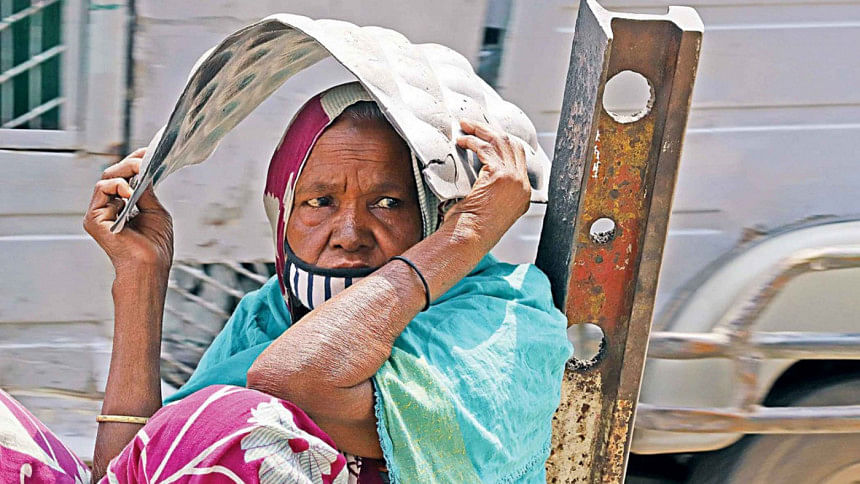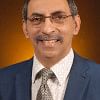How to improve beneficiary targeting in social protection programmes?

It is widely acknowled-ged that Bangladesh has been successful in making impressive gains in poverty reduction in the past years. Nevertheless, at the end of 2019, there were still about 16.5 million people categorised as extreme poor. This number has gone up substantially since mid-2020, due to the onslaught of Covid-19 pandemic. The sheer number of extreme poor in the country is no doubt a cause for concern. As the Covid-19 crisis was unfolding in early 2020, the government undertook a variety of measures such as cash and food distribution for the new poor. These were supported by the existing social protection (also called social safety net, social transfer or social security) programmes which are aimed at reducing the social and economic risks of the poor families.
The social protection programmes in Bangladesh include conditional and unconditional cash transfers or food assistance to poor families, public works programme, improvement of household nutritional status, supporting families with monthly educational stipends, old age pension, payments to women for accessing maternal and child healthcare services, and building skills to increase labour productivity and income. The country has a comprehensive social protection system in place targeting the chronically underfed and vulnerable population, who are mostly landless, face seasonal hunger, and depend on daily-wage employment in agriculture and other sectors, as well as the widowed and disabled, etc.
In 2020-21, a total of Tk 95,574 crore has been allocated by the government for social protection programmes. It should be noted that the total public spending on these programmes at the end of 1990s was less than 1 percent of GDP. It increased to 1.6 percent in 2007-2008 and stands at 3.01 percent of GDP in 2021. However, it is not possible to cover all eligible people with these programmes despite a sustained increase in budgetary allocations. Due to the economic shock associated with the pandemic during the last one year, millions of people have either lost their jobs or their income level has gone down substantially, pushing them below the poverty line. The government has recently taken a decision to expand the social safety net programmes to reduce the economic impact of Covid-19. A fresh budgetary allocation of Tk 1,200 crore has been announced for this recently.
Unfortunately, many deserving poor people in the country are not getting the benefits of the social protection programmes. A key challenge in this respect is poor targeting of beneficiaries which means two things: one, many real poor people are not getting the benefits—which is an "exclusion" error; two, many have been included although they do not meet the eligibility criteria, i.e. non-poor—which is an "inclusion" error or "leakage". A sizable number of non-poor are included in each of the programmes which is happening due to weaknesses in the beneficiary selection criteria. Whenever we visit social security programme communities, we hear this complaint made by non-beneficiary families who compare themselves with the mis-targeted beneficiaries (non-poor) and wonder how they have not been included in the programme although they meet the eligibility criteria.
The challenge is thus to have better beneficiary selection criteria so that the real poor get the benefits. To improve the targeting of beneficiaries, first and foremost, a high-level government commitment is required to strengthen programme management, minimise leakages, strengthen monitoring and supervision, and improve the payment system so that the poor receive the benefits on time. With proper identification and timely delivery, the poor will be able to climb out of poverty more quickly.
There is more than one method for selection of the extreme poor households for the social protection programmes. One of these methods, which is used in many countries, is called "Proxy Means Test". This requires collection of information on (i) household demographic characteristics, (ii) housing quality, access to service facilities and remittances received, (iii) ownership of assets, and (iv) locational advantages. These proxy variables can identify the poor with reasonable accuracy and considerably improve the targeting efficiency.
Let's take a look at the proxy determinants of poverty under these four categories, which should be easily observable and measurable, and relevant for Bangladesh:
Household demographic characteristics
The assumption behind the collection of such information is that a higher number of children in a family increases dependency and reduces household consumption expenditure per capita. The work that the head of a household does—as an agricultural labourer, day labourer, transport worker, rickshaw/van puller, shop or factory worker or one engaged in petty trading—means the income of the person will be low. Also, a female-headed household is likely to be poorer when she is widowed, divorced or separated. Again, the household head's educational level is usually found to be negatively correlated to poverty.
Housing quality, access to service facilities and remittances received
It is assumed that low-quality materials used in building the house, non-availability of electricity, poor access to clean drinking water and hygienic sanitation facilities, and non-participation in NGO microfinance programmes mean the household demonstrates low-consumption levels and is supposedly poor. The families that receive remittances either from inside the country or from outside supposedly have a much better consumption level and enjoy food security.
Ownership of assets
The assumption is that possession of livestock, TV, good-quality furniture, tube well, fan and bicycle demonstrates that the household is not poor.
Locational advantages
Geographical location is an additional factor in determining a household's likelihood of being poor. The eastern part of the country—i.e. Dhaka, Chattogram and Sylhet divisions—are more developed and have better access to urban growth centres of the country and, therefore, a household in these divisions is likely to be non-poor. On the other hand, the western part of the country is lagging behind in this respect, including Khulna, Rajshahi and Barisal divisions, which have a much larger share of the poor people.
The above proxy determinants, which can be easily observed, give information necessary for the calculation of a weighted average status of a household's economic condition and can help in deciding about the household's eligibility for inclusion in a social protection programme. The targeting instruments of the existing social protection programmes are not all based on observable and verifiable criteria. One common beneficiary selection criterion of these programmes is monthly household income, which is neither observable nor verifiable. Another selection criterion is household landholding, which is equally difficult to verify. Since it is administratively difficult to measure both income and landholding, it is recommended that the Proxy Means Test be used for beneficiary selection of ongoing and any expanded programmes to improve targeting of the poor.
The local government bodies—Union Parishads, Upazila Parishads, Paurashavas, City Corporations—are traditionally involved in the beneficiary selection process. It is recommended that the local NGOs be also engaged in the process, which can help gather reliable information for the Proxy Means Test. Most NGOs in Bangladesh routinely collect similar information from the poor households to identify their own beneficiary groups, and therefore their cooperation should be sought in such endeavours. It is also advisable that rather than collecting information by each social safety net programme separately, it may be better if all the government programmes together design an effective household targeting mechanism which can satisfy the needs of all programmes.
While the types of intervention needed to deal with economic/other shocks associated with Covod-19 are more or less decided within the government circle, how to identify the most deserving families for the benefits offered is a challenge that we need to resolve urgently, for better utilisation of public resources. We already have a social security infrastructure and this can be used as a platform to build upon. We have many ongoing social protection programmes for which budgetary allocation has been made, beneficiary selection committees at the local level are working, the electronic money transfer system is functioning to some extent, and management information systems (MIS) are in existence. With some additional efforts, we can quickly expand these programmes by using an improved targeting method and thereby reducing exclusion and inclusion errors.
Dr. Nawshad Ahmed is an economist and urban planner.

 For all latest news, follow The Daily Star's Google News channel.
For all latest news, follow The Daily Star's Google News channel. 



Comments